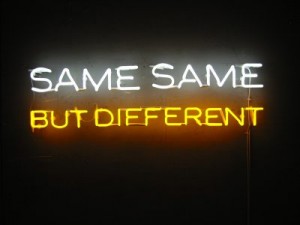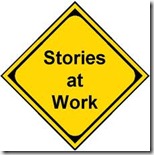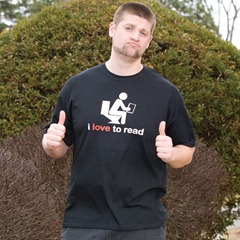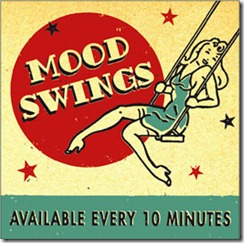Fiction-Zone: Leaps in Fiction Mastery by Diane Holmes
“Be Original.”
Most writers have heard that advice. And most writers think they’re original, but they’re not. The words are rearranged, but everything is just one or two degrees off exactly what we’ve read before. The expected. The usual. The awful ordinary.

Why aren’t we original if we’re trying so hard to BE original? Maybe it’s because our love for the story archetypes or forms is too great and we hold on way too tight, confusing the minute details of the story with the love we feel.
There is a delicious goodness, a savory warmth to all our different novel forms. Some forms become genres or types, because we revel in their goodness so much. We say, “More of that!” And in our desire to give and receive “more of that,” we recite familiar terrain.
- Characters say the same things in the same situations.
- Settings are delivered with expected bows and wrapping.
- Plot twists come and go like dancers on a wind-up music box.
Always the same dancers, same song.
And all of that comes from attempts to be original. (“Hey, these are MY characters in My story! He didn’t say, ‘Stop or I’ll shoot you!’ He said, ‘Don’t make me cause your death!’ It’s original.”)
Yeah. So forget original. All that comes of that is we’re original in the same ways. And frankly, original does not mean interesting. You can be original and boring. No one wants that.
This is your call to be something more. Be captivating.
It turns out that the greatest originality is not what’s in YOUR writerly mind, but in what happens in the mind of the reader.
When you’re trying to be original, the focus is on you, the writer. The reader is unmoved, because the reader isn’t being “original-ed.” But when we talk “captivating,” now the reader’s involved. Because it’s the reader who is captivated. The reader is caught up breathless, suspended over the lexicon of imagination on paper and busy story-making in her own mind.
How to Be Captivating – A Lesson from Dick Francis
Opening sentence of Decider by Dick Francis
OK, so here I am, Lee Morris, opening doors and windows to gusts of life and early death.
#1 Take the readers into unchartered waters.
Holy cow. What an opening. Is it original? Yes. But more than that, it’s captivating, fanciful, poetic, and full of Lee’s point of view. And better yet, I don’t know where this will go. I’m off balance, in uncharted story-waters and eager to find out more.
They looked pretty harmless on my doorstep: two middle-aged civil Englishmen in country-gent tweeds and flat caps, their eyebrows in unison raised inquiringly, their shared expression of embarrassed anxiety.
“Lee Morris?” one of them said, his diction clipped, secure, expensive. “Could we speak to him?”
“Selling insurance?” I asked dryly.
Their embarrassment deepened.
“No, actually. . .”
Late March evening, sun low and strong, gold light falling sideways onto their benign faces, their eyes achingly narrowed against the glare. They stood a pace or two from me, careful not to crowd. Good manners all around.
I realized that I knew one of them by sight, and I spent a few extended seconds wondering why on earth he’d sought me out on a Sunday a long way from his normal habitat.
During this pause three small boys padded up the flagstoned passage from the depths of the house behind me, concentratedly threaded a way around me and one through the pair beyond and silently climbed like cats up into the fuzzy bursting-leaf-bud embrace of an ancient spreading oak nearby on the lawn. There the three figures rested, becoming immobile, lying on their stomachs along the old boughs, half seen, intent secretive, deep in an espionage game.
The visitors watched in bemusement.
“You’d better come in,” I said. “They’re expecting pirates.”
#2 Follow Hidden Logic
There is so much that is captivating here! There is a logic that comes from Lee’s mind, and yet I cannot guess it in advance. I’m entertained in the best way; I’m busy learning the character, experiencing the unfolding of (yes, original) situation, and caught off-guard by character’s unusual wit.
#3 Infuse the scene with your genre’s tone, attitude, and sensibilities; don’t swing genre props at the reader like a mallet.
And yet, this fits well within an established genre: mystery/suspense. The story opens as the protagonist opens the door to death. Something is out of place (the two men) and therefore not quite right. His boys are playing an espionage game (the game of lies), and soon there will be pirates (the game of villains and violence).
And it has all intruded on this unsuspecting, innocent day.
How wicked.
How terribly… captivating.
- Evil villain laughing maniacally = 0
- Tortured victims of serial killers = 0
- Burned out ex-cops = 0
- Jack-ass boss/politician/reporter/ex-spouse = 0
So, today, is your writing captivating? Tell me what you did to captivate your reader.
—
 Diane is Founder and Chief Alchemist of Pitch University.
Diane is Founder and Chief Alchemist of Pitch University.
“Learn to pitch your book from the AGENTS and EDITORS who make their living at it. Learn. Pitch. Sell.”
 Diane writes two columns for Freelance-Zone: Fiction-Zone: Leaps in Fiction Mastery and Marketing-Zone:Marketing-Zone: Marketing Yourself and Your Book.
Diane writes two columns for Freelance-Zone: Fiction-Zone: Leaps in Fiction Mastery and Marketing-Zone:Marketing-Zone: Marketing Yourself and Your Book.





